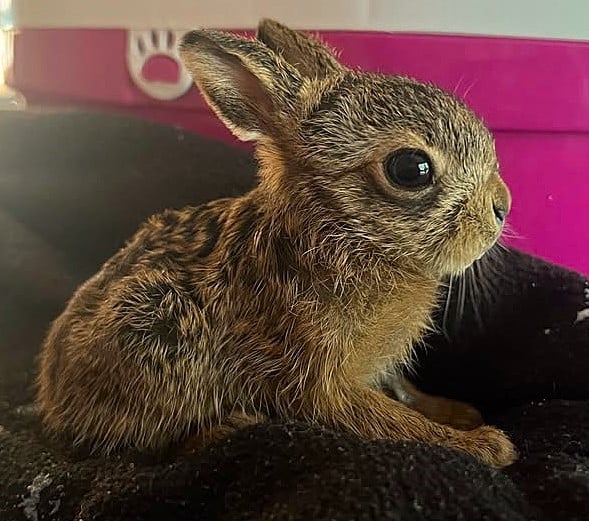The ManxSPCA’s position on the shooting of hares is that this should always be done using a camera, not a gun.
However, these magical creatures can be shot and killed legally – in the Isle of Man the mountain hare can be shot without a licence, but the common or brown hare (alongside grouse, partridge, pheasant, snipe, woodcock, mallard, widgeon and teal) must be shot with a licence (issued by the Department of Environment Food and Agriculture).
The issue is a very current one in England and Wales at the moment, because the English parliament is considering an amendment to the law which would bring in a ‘close season’ for the killing or taking of hares.
The Isle of Man already has one - February 1 to September 30.
Hares are the only ‘game’ animals in England and Wales to not already have a close season, and England and Wales are also the only countries in the UK and most of Europe in which no such close season operates for hares.
In Scotland, mountain hares are already protected under the Wildlife and Countryside Act (1981) so cannot be shot or harmed at any time of the year, and Scotland introduced a close season for brown hares under the Wildlife and Natural Environment (Scotland) Act 2011, which protects brown hares from shooting from February 1 to the end of September.
The hare is one of the indicator species for the UK government’s legally binding targets in England to halt the decline in species abundance by 2030 and reverse declines by 2042.
Hares were also listed as a priority species in the UK Biodiversity Action Plan in 1994 as a result of an estimated 80% decline in numbers over the past century, due to habitat deterioration and agriculture intensification (in particular the loss of long grasses and hedgerows), the use of pesticides, as well as widespread persecution.
The brown hare population in 2022 was thought it to be less than 500,000 individuals in the UK, with mountain hares now existing in just one isolated population in England, the Peak District, with far fewer numbers than previously estimated.
This brings the unprotected Manx mountain hare’s plight into stark relief.
A legally binding close season would prevent the killing of any brown or mountain hare in England and Wales between February 1 and the September 30, except under licence to prevent serious crop damage.
The duration for the closed season is based on the breeding season during which leverets are dependent on their mother for around three to four weeks after birth and will not survive if she is needlessly killed for sport.
Many hares are pregnant or nursing young in February, and the Game Conservancy Trust estimates that a February hare shoot can remove 60% of the breeding stock.
The proposed legislation would help hare populations to recover while also markedly reducing widespread animal suffering.
The ManxSPCA would like there to be a heavier burden of proof for hares to be considered as pests; and a much higher threshold, and cost, for the issuing of licences to kill them.
We do our bit to help the species, although the adult hares we take in are almost always fatally wounded after a road traffic accident, and orphaned leverets are notoriously difficult to hand rear.
However, we do have the occasional success with leverets, including the one pictured that was brought to us by a member of the public last year. It had been caught by a dog but, thankfully, was uninjured.
And, finally, if ever we needed more proof of the magicality of the hare, remember that it is a species that has never been tamed – preferring, instead, to live an independent life, free to roam and run at phenomenal speeds of up to 40 miles per hour (the hare is one of the fastest land mammals in the world).

.jpeg?width=209&height=140&crop=209:145,smart&quality=75)

.jpeg?width=209&height=140&crop=209:145,smart&quality=75)
